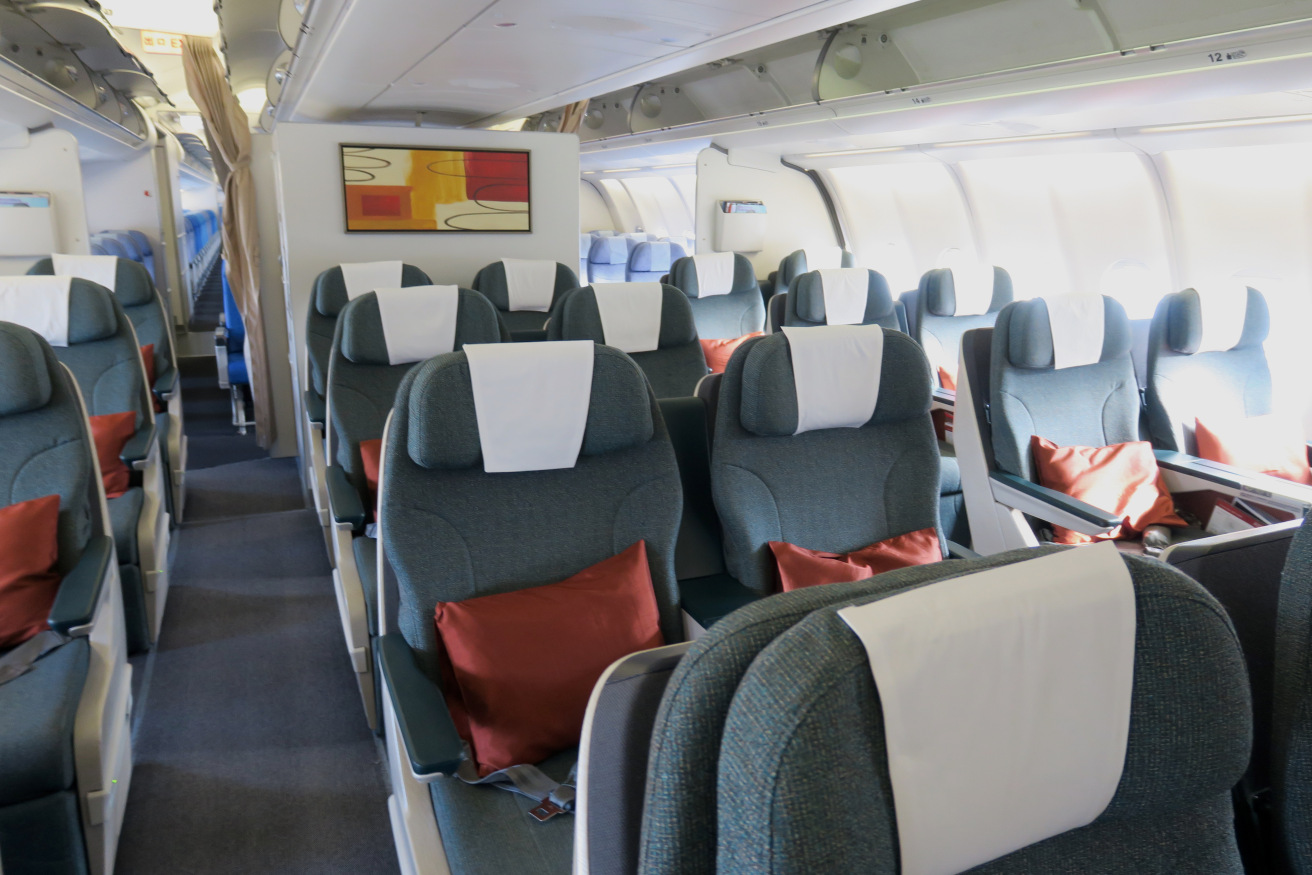If there’s anything that this blog has been all about, it’s been the argument that Jason and I have been having regards Cathay Pacific regional business class. I’ve tried a few different business class products that I certainly find to be even worse, and I’ll try to keep a neutral stance, but there’s no denying that it’s a crap product. 😉
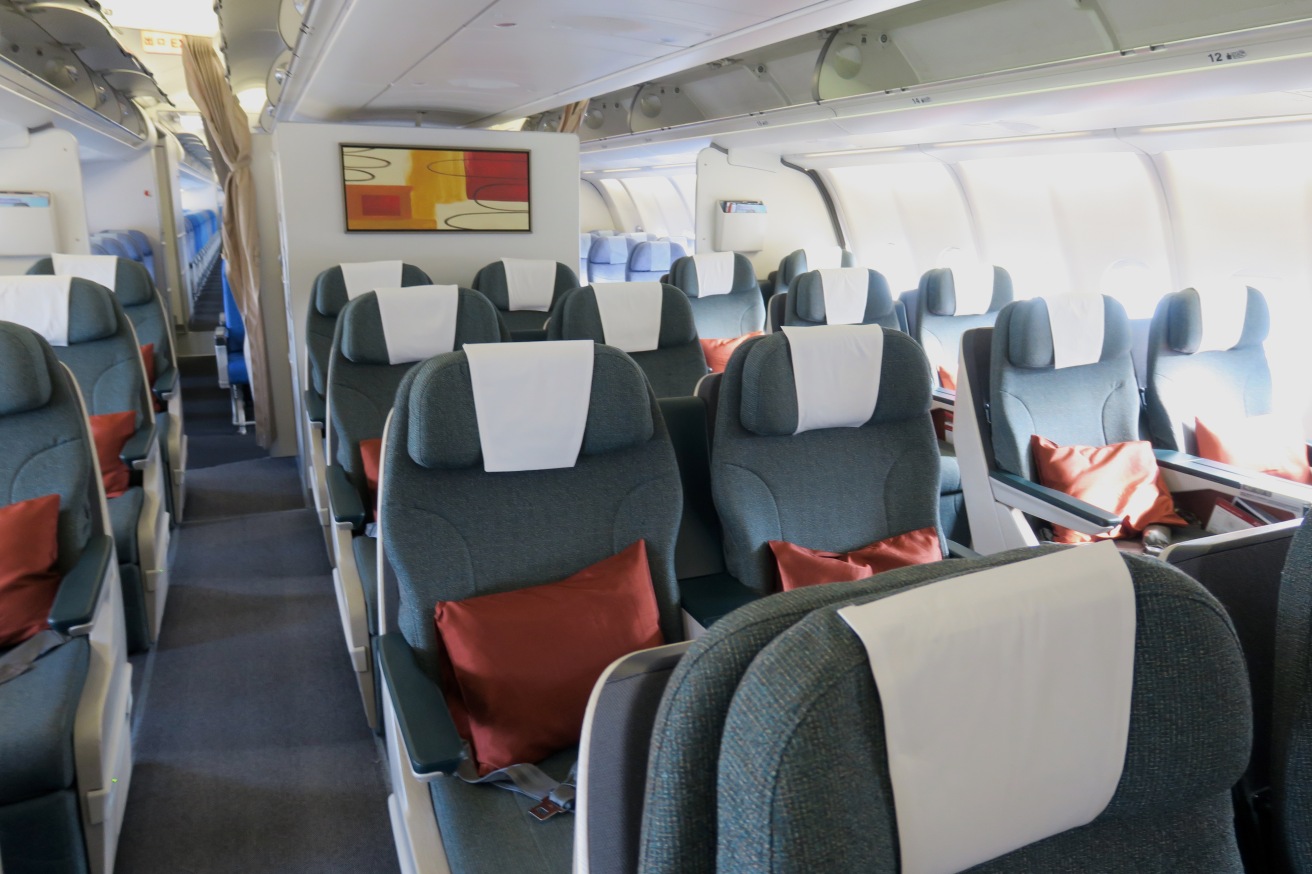 Cathay Pacific Airbus A330-300 Regional Business Class
Cathay Pacific Airbus A330-300 Regional Business Class
In all honesty, I’ve been giving the product a pretty hard time, and most business travelers don’t have much flexibility on which flight they can take, especially when there’s only one flight a day and it’s operated by a regional cabin. So I’ve decided it would be good to compile a quick guide on how the product is, and the perks you’ll get compared to if you’re seated in economy (apart from not getting cramped into a 3-4-3 configuration).
I’ve written a bit about the product and my views of it before, so here are all the posts we’ve written mentioning the regional business class product, including reviews:
- More Thoughts on Cathay Pacific Regional Business Class
- What are My Thoughts on Cathay Pacific Regional Business Class?
- Is Cathay’s Regional Business Class That Bad?
- Cathay Pacific A330 Regional Business Class Review Taipei to Hong Kong
- Cathay Pacific 777-200 Regional Business Class Review Hong Kong to Taipei
- Cathay Pacific 777-300 Regional Business Class Review Osaka to Hong Kong
- Dragonair A330 Business Class Review Fukuoka to Hong Kong
- Dragonair A330 Business class Review Hong Kong to Fukuoka
I gotta be honest – there are worse regional products out there. That’s undeniable. All I will say is that the product is mostly operated to upmarket places such as Taipei, Tokyo, Bangkok, Jakarta, Singapore, etc., and most competing airlines either offer purely flat beds or angled lie-flat beds, which have a wider range of seating configurations. These airlines include Thai, Singapore Airlines, and Korean Air. Of course, you’d get to some airlines such as Vietnam and Malaysia which offer recliners on most flights – but the goal is to appeal to all markets, and this seat just doesn’t. However, I promised a neutral stance, so that’s what all of you will get from me.
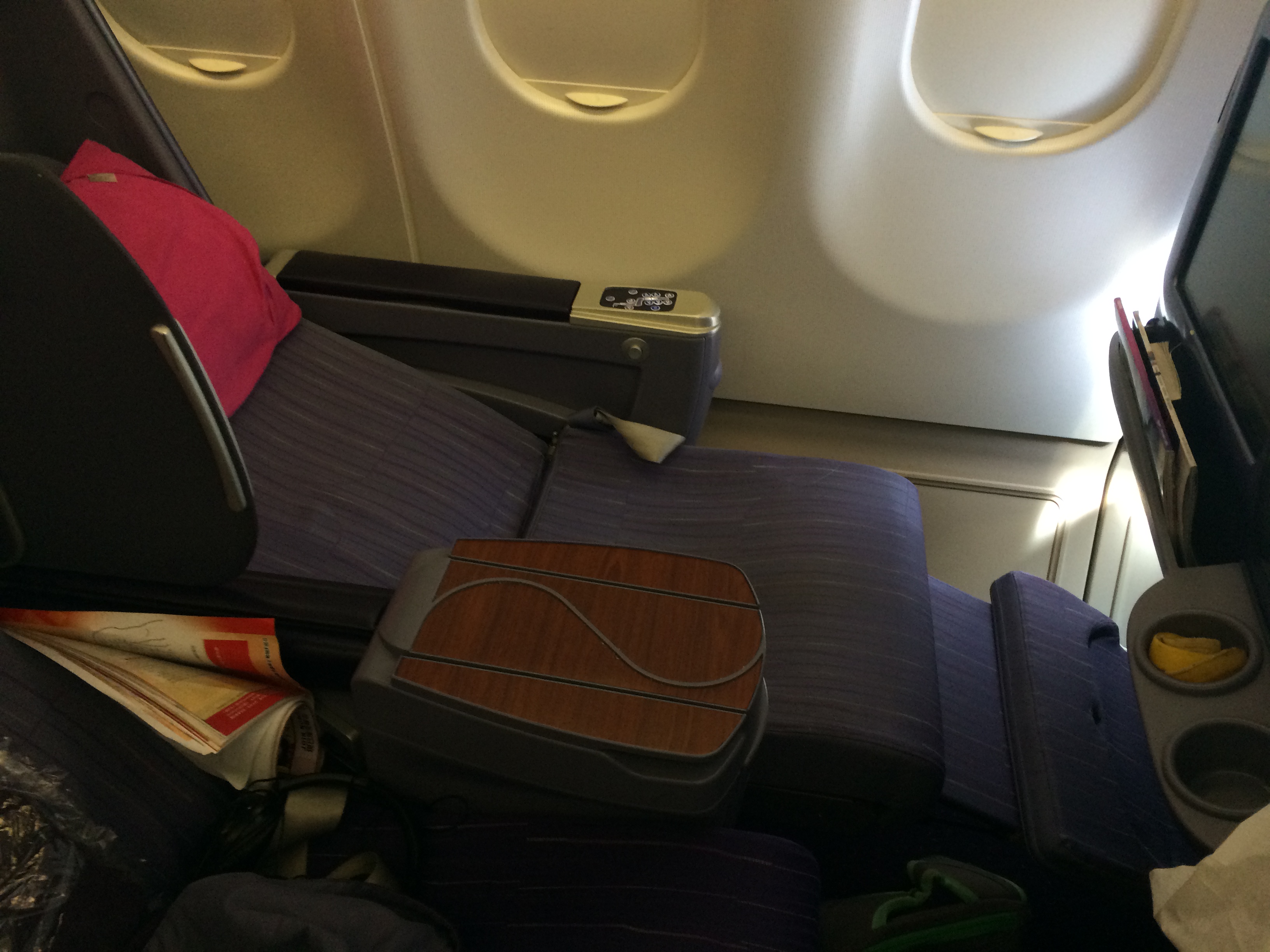 Thai has a flat bed for their “regional” product, which I’d gladly take over Cathay’s seat (they have recliners that now stick to “true”, mostly domestic shorthauls)
Thai has a flat bed for their “regional” product, which I’d gladly take over Cathay’s seat (they have recliners that now stick to “true”, mostly domestic shorthauls)
So What Can The Seat Do?
A lot of people think of Cathay Pacific’s regional business class as a “limited angled flat bed”. I can’t even look at it that way – it’s little more than an electronically controlled recliner. Sure, it’s nice to have the shell in front of you, but that’s basically the only difference I can name (aside from reclining into a position that is barely any more comfortable).
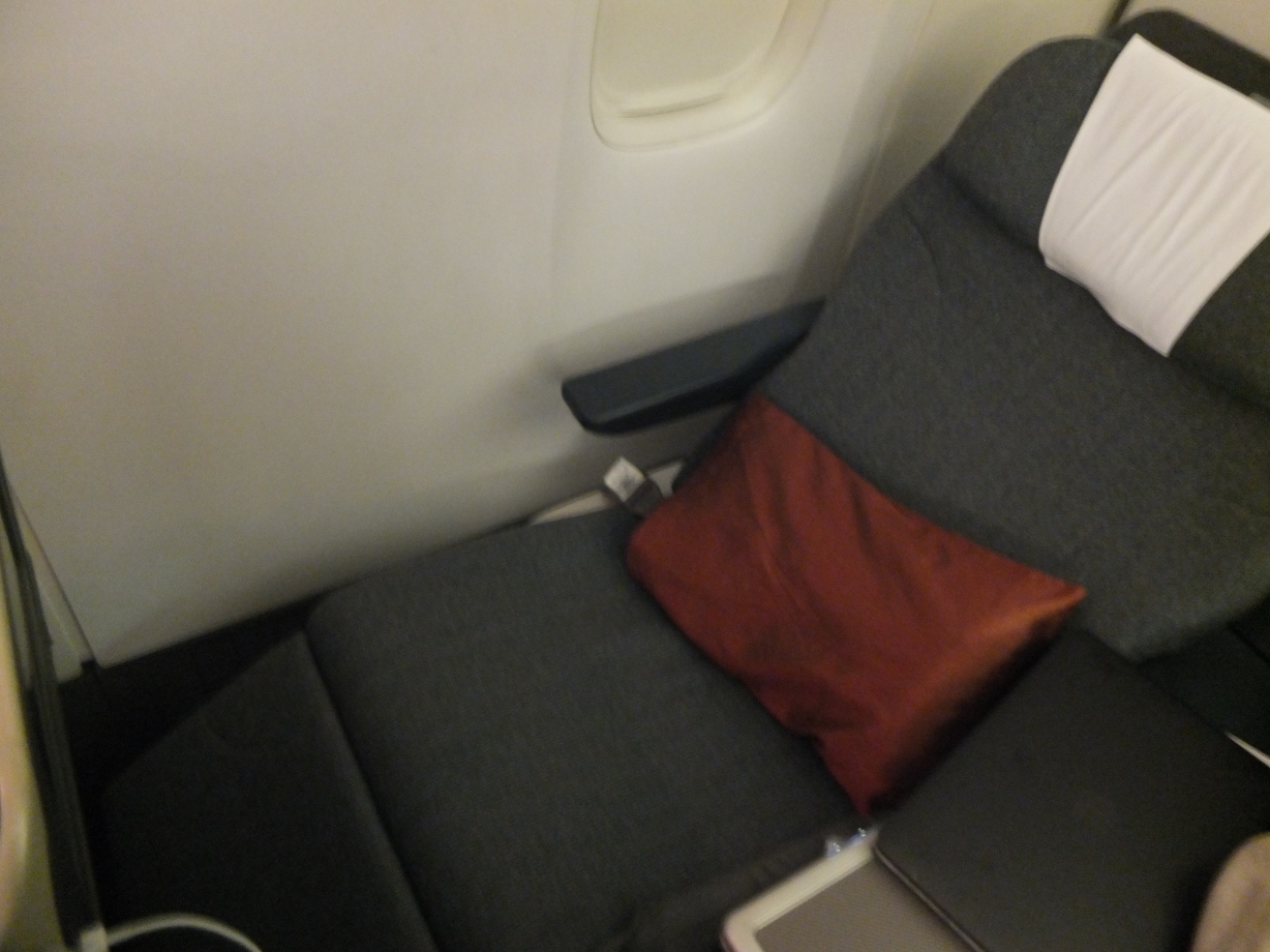 Cathay Pacific Boeing 777-300 Business Class Reclined Seat
Cathay Pacific Boeing 777-300 Business Class Reclined Seat
The configuration is pretty simple – if you’re on an A330, you’ll get a 2-2-2 configuration, and if you’re on a 777, you’ll get a 2-3-2 configuration. It definitely sucks if you’re on a 777 and stuck in a middle seat, which is never cool, especially when seated in business class.
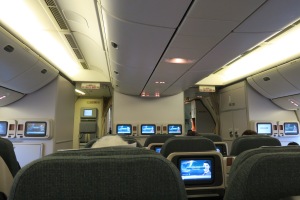 Seated in the middle block of Cathay Pacific 777-200 Business Class
Seated in the middle block of Cathay Pacific 777-200 Business Class
The front row affords a little extra legroom, which you’ll be able to spread out in. I’d say I’d choose the front row for the legroom if I could (though I’d prefer a non-bulkhead window seat to a bulkhead middle seat).
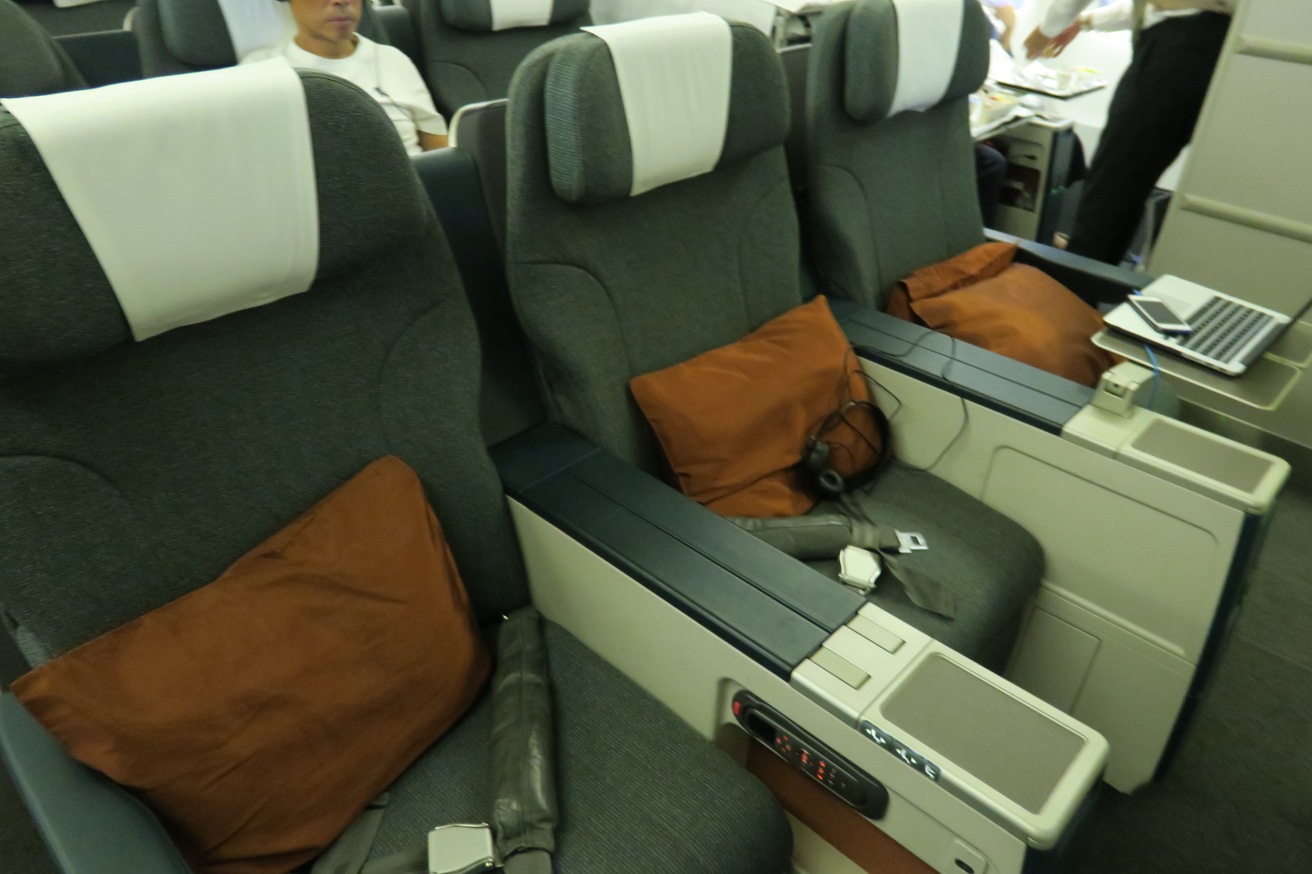 Cathay Pacific Boeing 777-200 Business Class Front Row
Cathay Pacific Boeing 777-200 Business Class Front Row
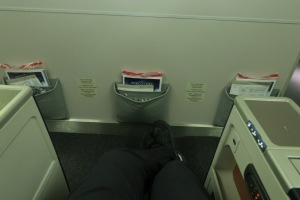 Cathay Pacific Boeing 777-200 Business Class Front Row Legroom
Cathay Pacific Boeing 777-200 Business Class Front Row Legroom
Each seat features a storage compartment where you can put your phone or a tiny point and shoot camera. These compartments are pretty handy, though you can’t store anything there for takeoff and landing.
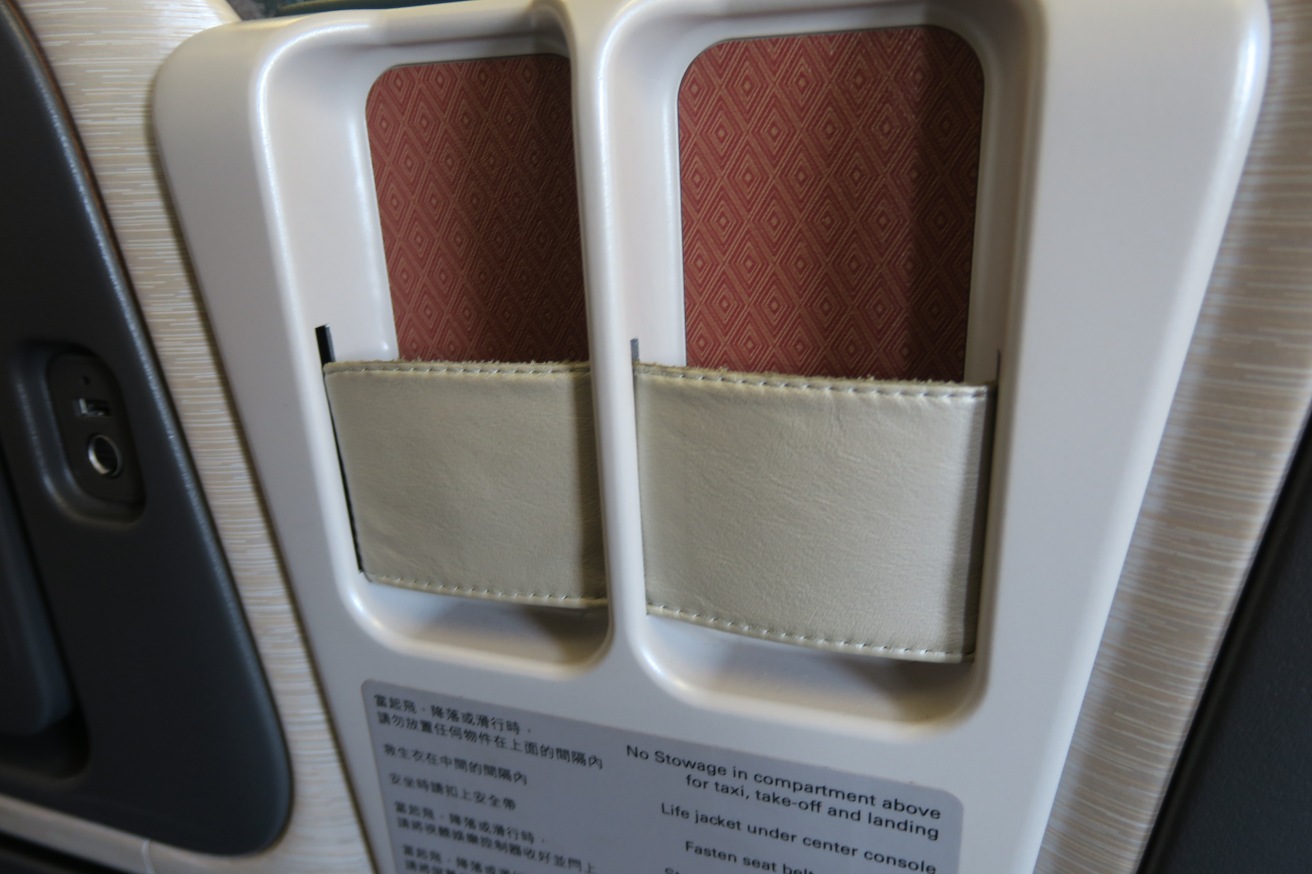 Cathay Pacific Airbus A330-300 Regional Business Class Phone Storage
Cathay Pacific Airbus A330-300 Regional Business Class Phone Storage
In the front row these compartments are a little more “rigid” and quite a bit bigger, so I’d recommend the front row if you have an iPhone 6+ or something.
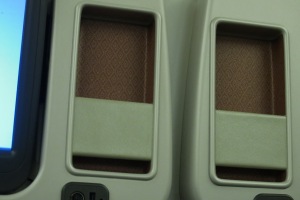 Cathay Pacific Boeing 777-200 Regional Business Class Phone Storage
Cathay Pacific Boeing 777-200 Regional Business Class Phone Storage
If you’re planning to work on the flight, you’re set too, as there’s ample power in the seat. The USB port is right next to the phone storage, and there are 110V power ports as well.
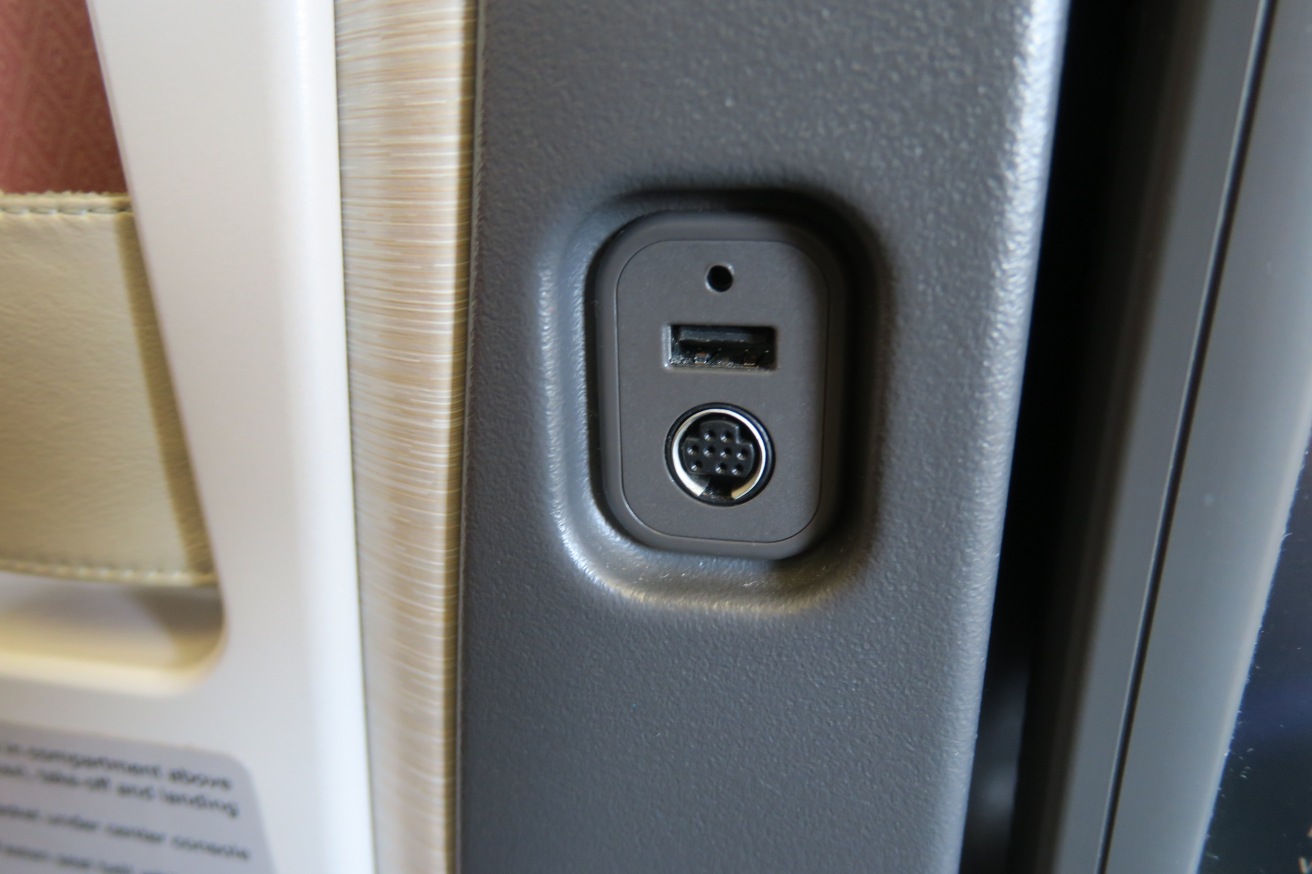 Cathay Pacific Airbus A330-300 Regional Business Class USB Port
Cathay Pacific Airbus A330-300 Regional Business Class USB Port
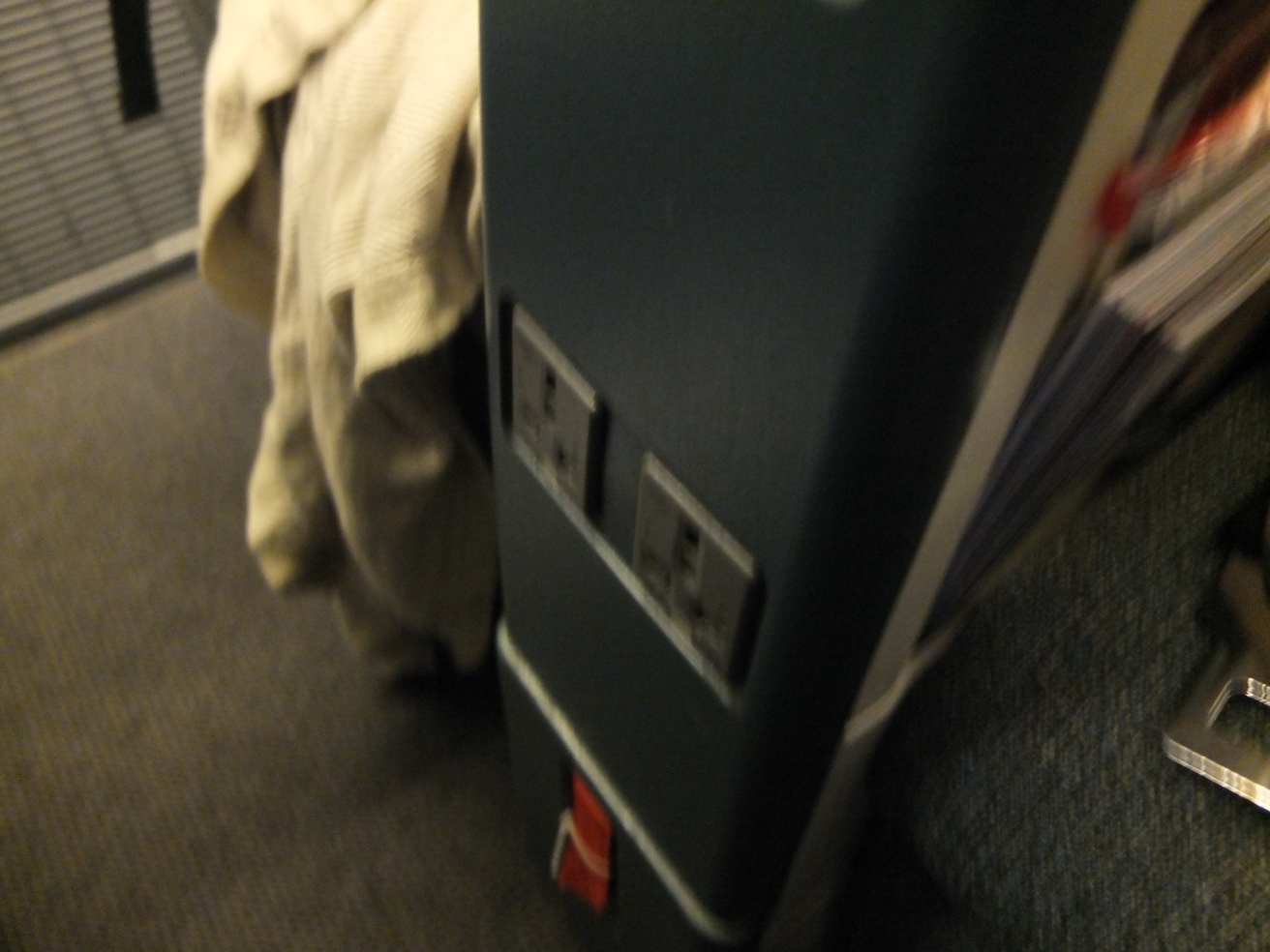 Cathay Pacific Boeing 777-300 Regional Business Class Power Ports
Cathay Pacific Boeing 777-300 Regional Business Class Power Ports
The seat controls are basic. There’s a preset for a fully upright seat, though there isn’t a preset for a fully reclined seat. Reclining your seatback fully doesn’t raise the footrest up fully though, so you have to press both buttons. I’d much prefer a fully reclined preset, which I don’t imagine would be that much of an ask.
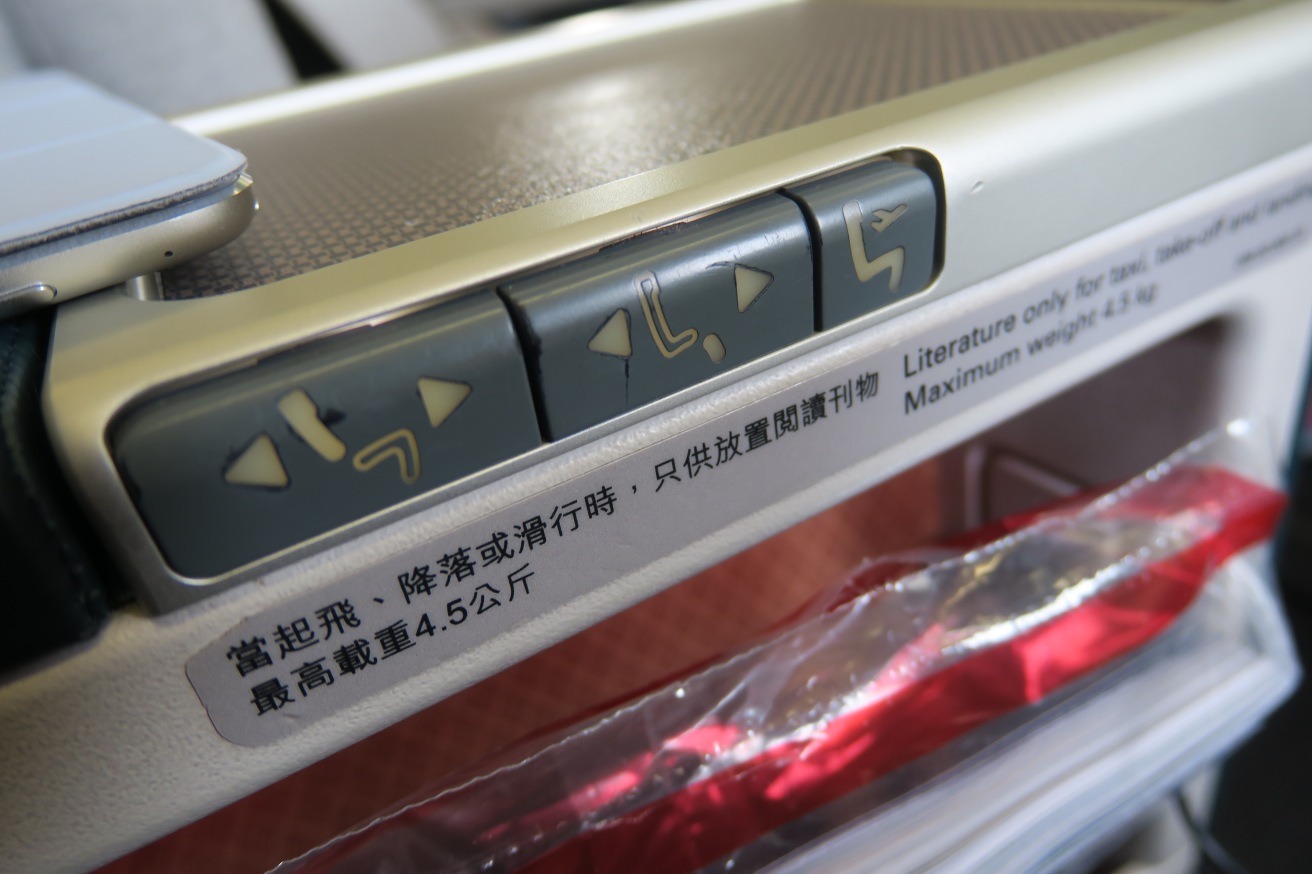 Cathay Pacific Airbus A330-300 Business Class Seat Controls
Cathay Pacific Airbus A330-300 Business Class Seat Controls
The TV in front is also touchscreen if that matters much to you, and normally features Cathay Pacific’s StudioCX inflight entertainment system. The only way this would be different in an international configuration is if you were taking the A350. The screen size is fine, but it certainly isn’t anything revolutionary.
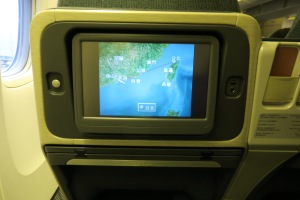 Cathay Pacific Boeing 777-200 Business Class TV
Cathay Pacific Boeing 777-200 Business Class TV
Ultimately these are all fine qualities, but all in all, it’s basically a pimped out premium economy seat. I mean, what? 😉
In all honesty, I guess it affords a little bit more recline and working space, though I wouldn’t imagine it’s worth some of the HK$15,000 price premiums that this seat has been given over premium economy. The only notable difference is the slightly increased width, the increased legroom and the recline added by a slight little bit (I’d talk about the legrests too, but the 777s are about to get legrests too, so unless it’s the A330, that’s kind of a moot point).
It’s worth noting that the padding is also crap, so they don’t get points there either.
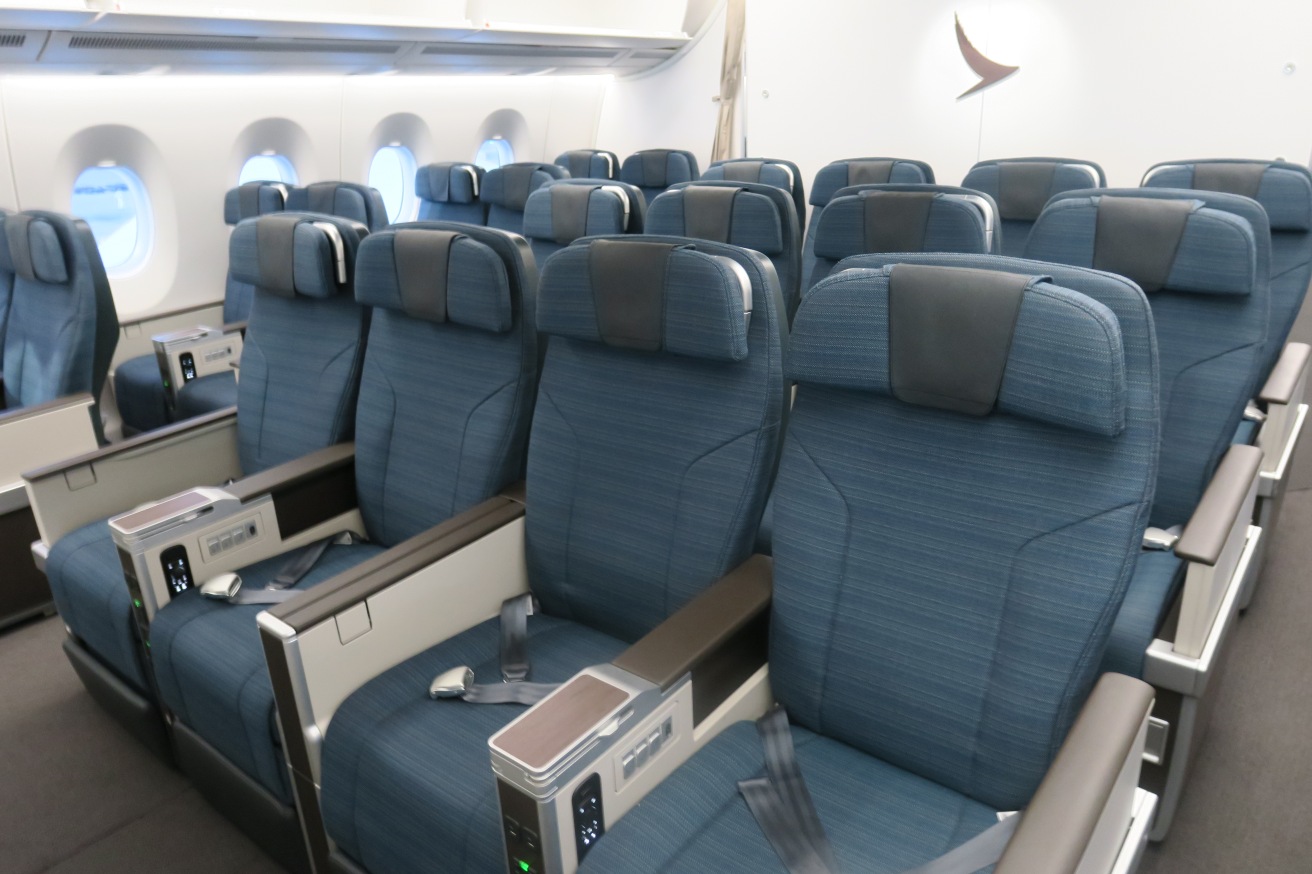 Cathay Pacific’s A350 premium economy has legrests, better padding, and slightly less legroom and recline – though I wouldn’t find it much worse here than I would in the 777 product
Cathay Pacific’s A350 premium economy has legrests, better padding, and slightly less legroom and recline – though I wouldn’t find it much worse here than I would in the 777 product
The tray table slides out from under the TV, and is sizeable, good for working (which will be more important when Cathay’s 777-300s get WiFi).
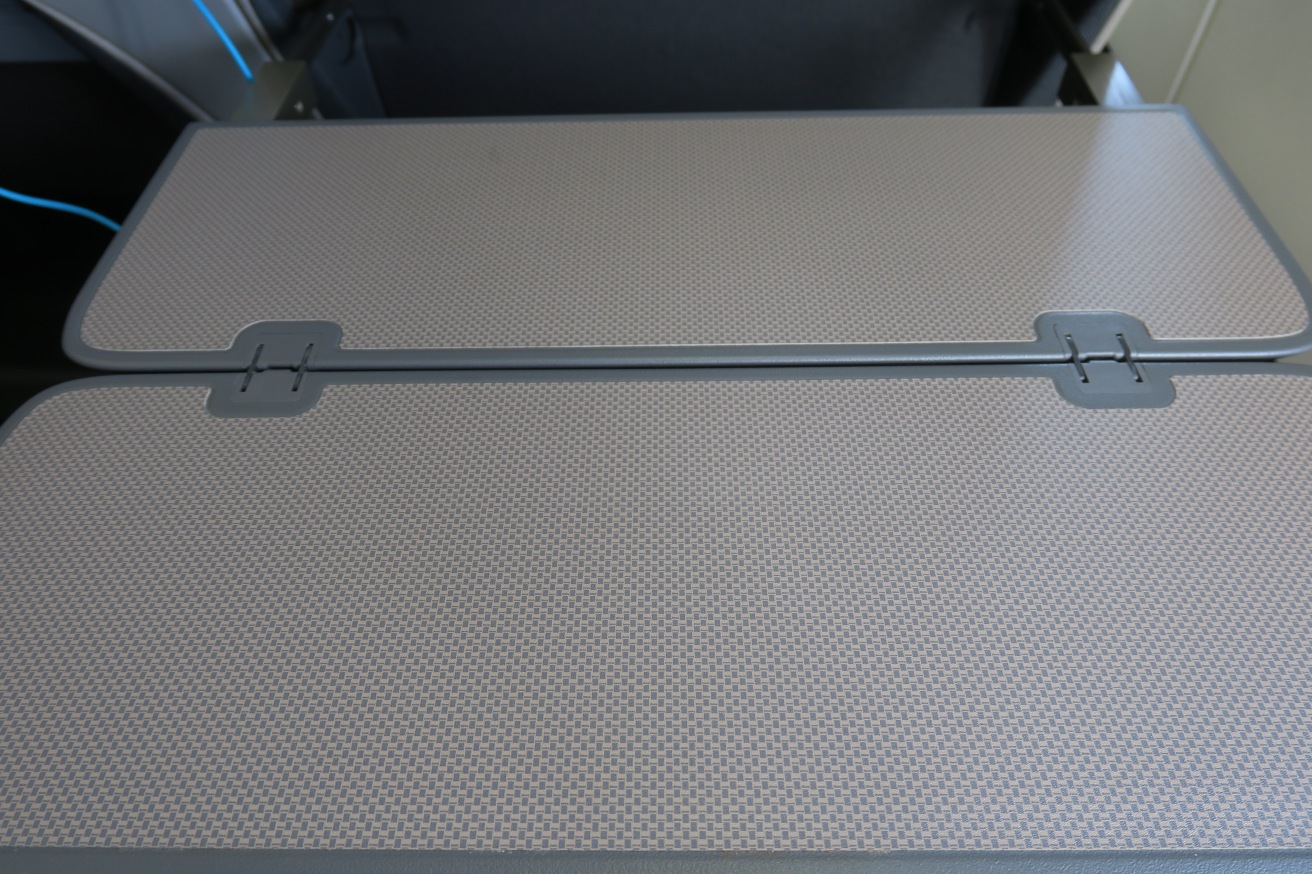 Cathay Pacific Airbus A330-300 Regional Business Class Tray Table
Cathay Pacific Airbus A330-300 Regional Business Class Tray Table
What do you get before you board?
Of course, Cathay Pacific’s excellent business class product means that you get to visit their excellent lounges when you’re in Hong Kong, Bangkok, Tokyo Haneda, etc. so I really have no complaints there. If you’re stuck flying back from an airport such as Osaka with a crap contract lounge, I sympathize – however, it’s not like you’re any better off if you were flying one of their international configurations.
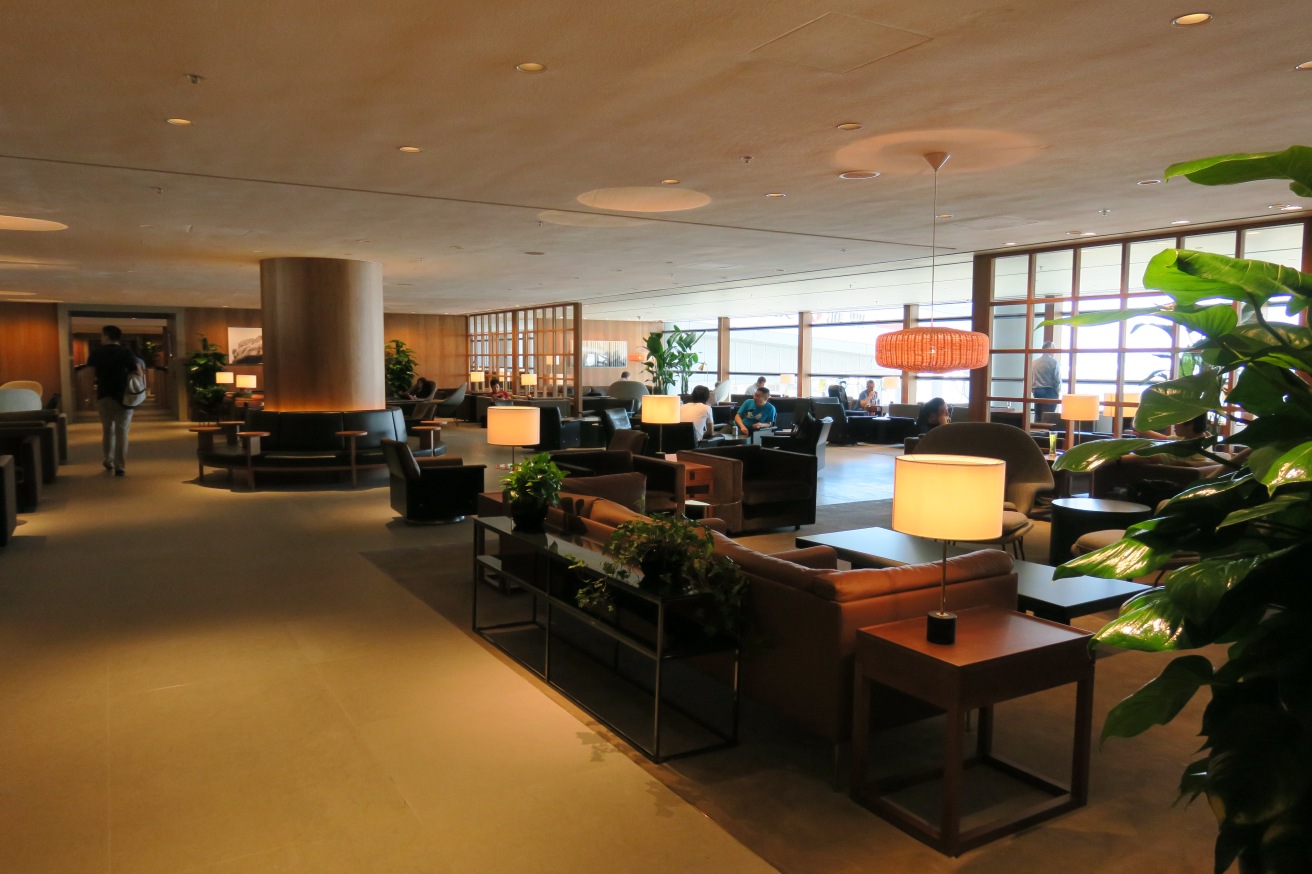 Visit some of Cathay Pacific’s best lounges before you board your
Visit some of Cathay Pacific’s best lounges before you board your subpar business class flight
You also get priority check-in and, on a case by case situation, priority immigration. That said, it isn’t any different from what you’d get in an international configuration.
What amenities are there?
Believe it or not, the amenities are actually vastly different between the regional and international products.
Let’s start with the similarities. The blankets are similar, as Cathay Pacific doesn’t load actual duvets on any shorthauls. However, that’s about it.
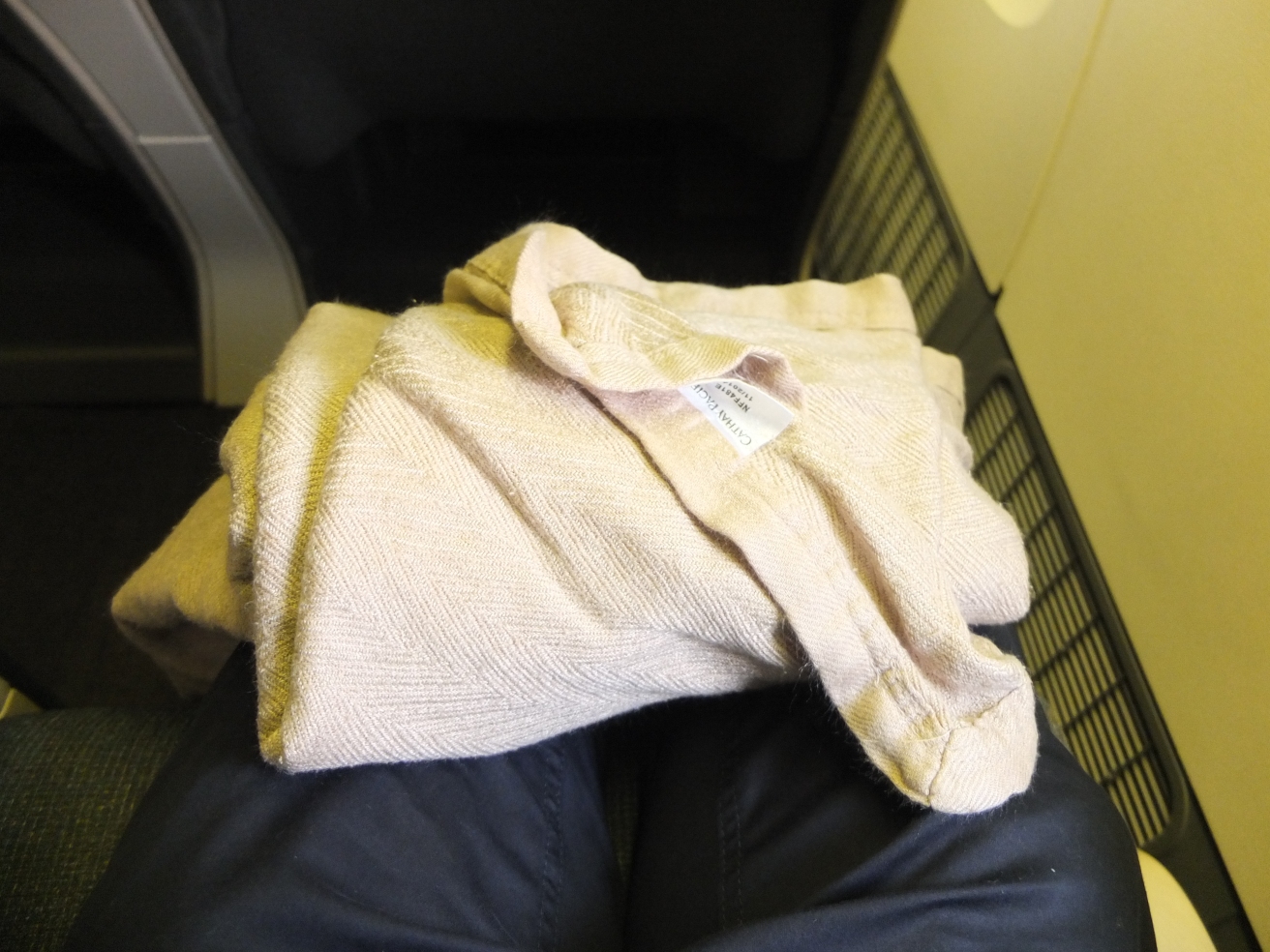 Cathay Pacific Boeing 777-300 Business Class Blanket
Cathay Pacific Boeing 777-300 Business Class Blanket
However, everything else is at least slightly inferior. Cathay Pacific’s international pillows are also used on regional routes run by international configurations, and they’re made to be suitable for sleeping. I’m not sure what these pillows even are, as they’re small, non-supportive and could basically be economy pillows. Their headphones used to be really crap, but now they’re slightly more padded. The sound quality is still pretty bad, but I guess it isn’t economy quality like it used to be.
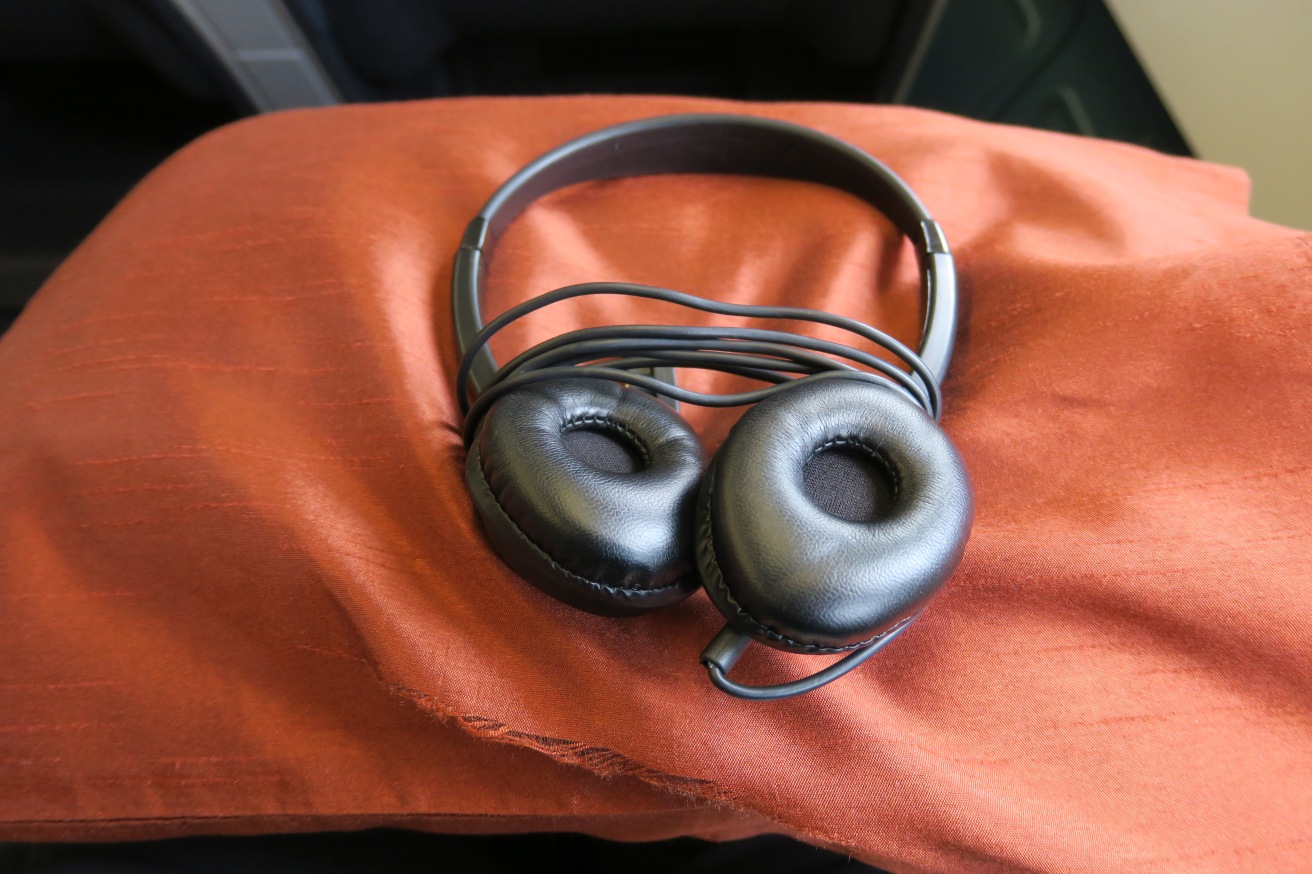 Cathay Pacific Airbus A330-300 Regional Business Class Pillow and headphones
Cathay Pacific Airbus A330-300 Regional Business Class Pillow and headphones
Meanwhile, if you were seated in an international configuration, you’d get noise cancelling headphones, which furthers the discrepancy between cabins. I took the below picture on a flight from Hong Kong to Osaka. Premium economy on international configurations also features similar headphones, which should say quite a bit about the product discrepancy.
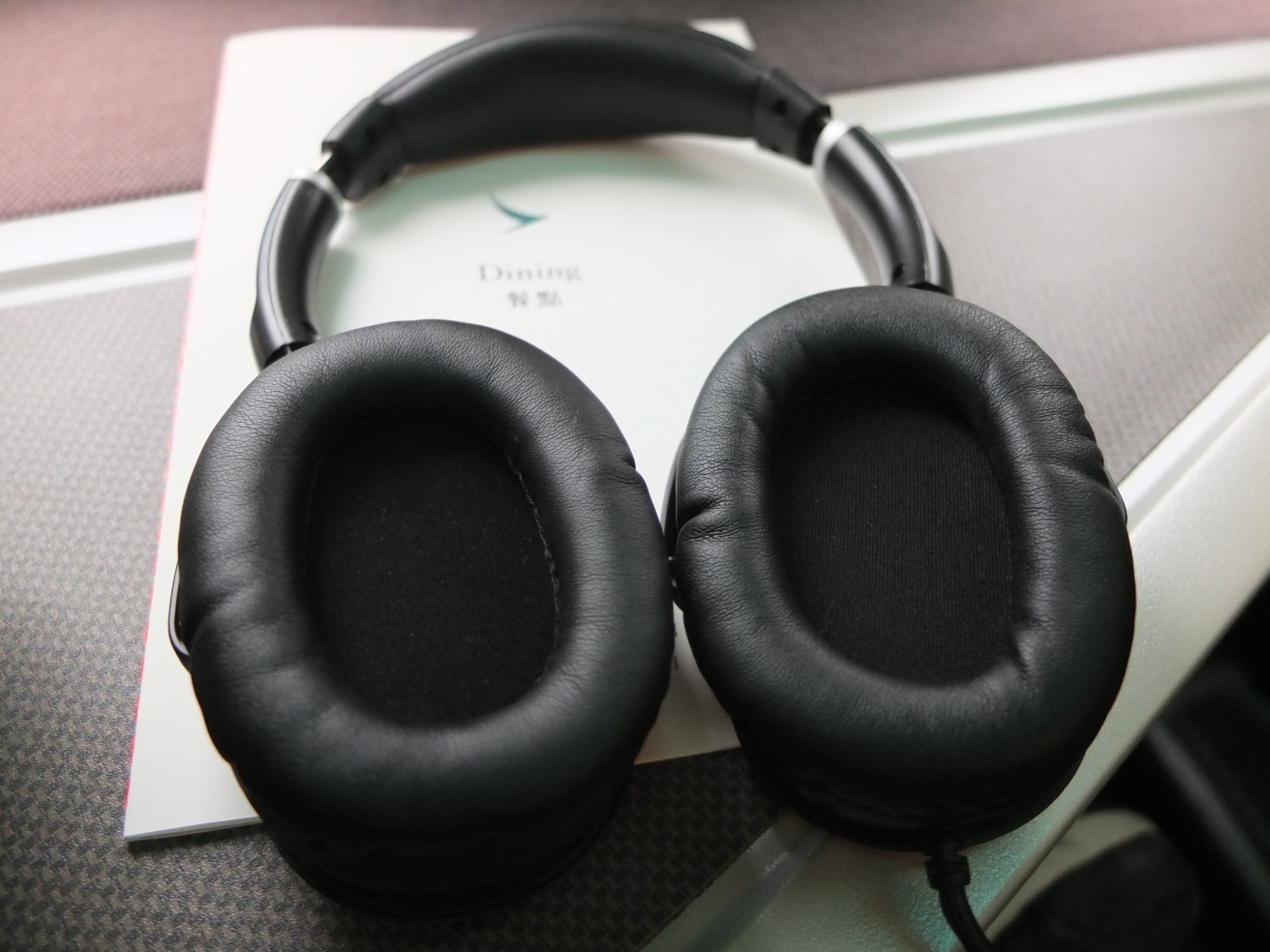 Cathay Pacific Airbus A330-300 International Business Class Headphones
Cathay Pacific Airbus A330-300 International Business Class Headphones
There aren’t amenity kits either way, and the lavatories are stocked with the same Jurlique amenities in both cases.
 Cathay Pacific Boeing 777-200 Business Class Lavatory Amenities
Cathay Pacific Boeing 777-200 Business Class Lavatory Amenities
How is the food?
The food really isn’t much different between international and regional configurations, though it’s worth noting that my favourite dish on a flight last year was had on a Cathay Pacific regionally configured aircraft. I don’t think it matters, though, as I had what was easily my second favourite dish on a Cathay Pacific internationally configured A330. I guess it’s normally okay – sometimes you get a great dish, sometimes it’s pretty bad.
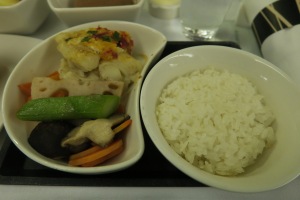 Cathay Pacific Boeing 777-200 Business Class Meal
Cathay Pacific Boeing 777-200 Business Class Meal
Bottom Line
In all honesty, I would still be looking forward to a flight albeit a regional configuration. However, if I were booking my own flight on a high-demand route, I’d try my best to avoid Cathay Pacific’s regional business class in favour of a flight with a fully flat bed. And that’s not hard, as Cathay Pacific flies their internationally configured A330s and 777-300ERs (as well as A350s) all around Asia. However, that’s all that I’d expect if I were flying shorthaul in regional business class – a downgraded seat, downgraded amenities, and hopefully service and food that’s still good.
It’s funny because the 777-200’s economy class product will soon be the product to seek out within Cathay Pacific’s fleet, while the same plane’s business class product is definitely one to avoid.
